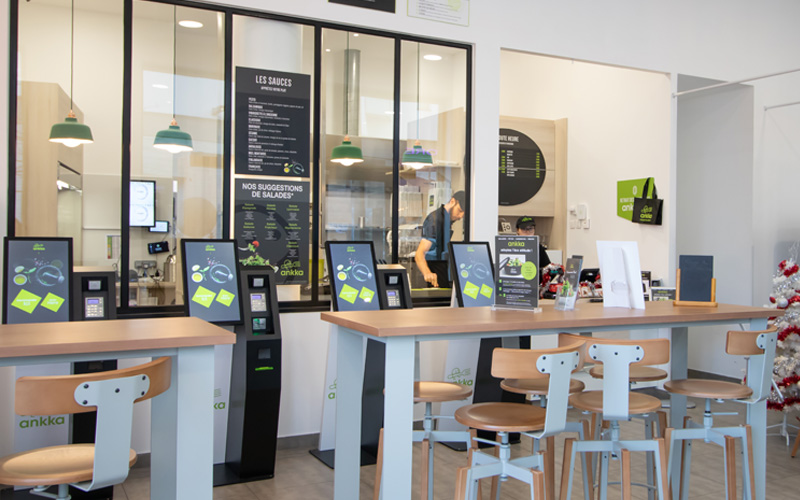Self-service kiosks are starting to make the leap from Quick-Service Restaurant (QSR) mega chains like McDonalds and Nando’s and into the mainstream of the restaurant and hospitality sector.
Kiosks are part of a new vision for customer experience in the restaurant trade, driven largely by demand from diners themselves for greater convenience, speed and control.
But what exactly is it that restaurant owners have to gain? Here are three ways that self-service kiosks can deliver value for your business.
1. Greater agility
More people than ever before want a say in what their meal contains when they go out to eat. There is more awareness around food intolerances, more people are making personal dietary choices like going vegan.
At the same time, a lot of people are conscious about being ‘awkward’ when it comes to asking staff about ingredients or requesting changes, or are concerned that something they ask for will be lost in translation between the waiter’s pad and the kitchen. Self-service kiosks change all of that. They hand customers full control over the ordering process, allowing them to look up ingredients as they please and customise their meal the way they want it. That can only lead to greater customer satisfaction, which in turn will lead to more sales.
Kiosks also make it easy for restaurant operators to be agile and innovative with their menu. A digital menu can be changed very quickly, it means the whole thing can be treated like a daily specials board, with new additions as and when the kitchen team are inspired to try something new, on-the-hoof replacements when one dish runs out based on the ingredients available. It also allows prices to be changed and promotions to be applied in real time, for example to try to shift surplus stock that needs using fast.
Kiosks also make it easy for restaurant operators to be agile and innovative with their menu. A digital menu can be changed very quickly, it means the whole thing can be treated like a daily specials board, with new additions as and when the kitchen team are inspired to try something new, on-the-hoof replacements when one dish runs out based on the ingredients available. It also allows prices to be changed and promotions to be applied in real time, for example to try to shift surplus stock that needs using fast.
2. Improved service
The main reason that QSR chains first adopted self-service kiosks was that they help to make the service process more efficient, and therefore quicker. By separating order taking from order fulfilment, you effectively take out a big piece of the chain – customers having to wait for a member of waiting staff to take their order and pass it onto the kitchen. With kiosks, customers can place orders sooner and kitchens can get preparing meals faster, meaning they increase the number of customers they can serve in a sitting.
Kiosks also help to improve order accuracy. Again, it’s about that risk of whatever a customer tells a member of waiting staff being lost in translation by the time it gets to the kitchen. Kiosks not only simplify the chain, they also put the customer in control of checking that the order is exactly what they want.
3. Increased margins
We have already seen a couple of examples of how self-service kiosks can help restaurant operators boost turnover – by increasing the efficiency of service so more meals can be sold, and by driving up levels of customer satisfaction through more personalised service, which encourages more repeat business. But kiosks can also help to increase margins, too.
Waiting staff are trained to up- and cross-sell in most restaurants – to recommend side dishes and extras, to check if everyone wants a starter or a dessert. But it is difficult for staff to make anything other than general suggestions, rather than really focus in on what might tickle each individual’s fancy. Plus, people are much more likely to respond to suggestions if they can see what is being offered, rather than just being told about it – our eyes have a much bigger influence over our appetites than our ears do. Kiosks solve both of these problems. First of all, there are fewer limits on the number of recommendations you can make – it would be difficult and not especially convenient for a member of waiting staff to list 10 potential side dish choices for every main meal chosen, but on a screen you can flash all of these up at once. And because a kiosk screen can use pictures, there is more chance of a customer seeing something they fancy and selecting it.




